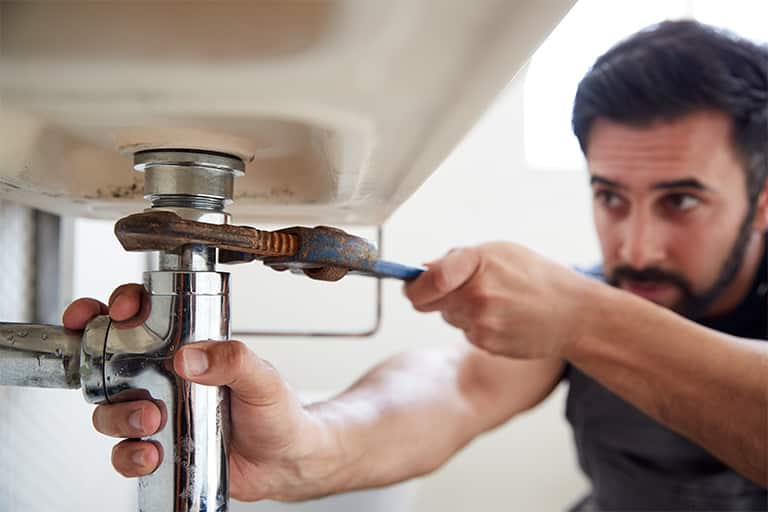Just how to Check If Your House Has a Surprise Leak
Just how to Check If Your House Has a Surprise Leak
Blog Article
Are you trying to locate resources on Detecting hidden plumbing leaks?

The moment you find a leakage, calling your plumber for fixings is the most effective remedy. Some small water leakages might not be noticeable. Here are some hacks that help if you can not spot it with your nude eyes.
Early detection of dripping water lines can reduce a potential calamity. Besides saving you cash, it will certainly reduce the irritation and aggravation.
Check Water Usage
If you identify unexpected changes, regardless of your consumption being the exact same, it suggests that you have leaks in your plumbing system. An abrupt spike in your bill indicates a fast-moving leakage.
A steady increase every month, even with the very same behaviors, reveals you have a slow-moving leakage that's also slowly escalating. Call a plumber to extensively inspect your home, specifically if you feel a warm area on your floor with piping beneath.
Examine and also Examine the Situation
Home owners ought to make it a behavior to check under the sink counters as well as also inside cupboards for any kind of bad odor or mold development. These two red flags indicate a leakage so punctual interest is required. Doing regular evaluations, also bi-annually, can conserve you from a significant problem.
Check Out the Water Meter
Every house has a water meter. Examining it is a proven way that helps you uncover leakages. For starters, turn off all the water resources. Make sure nobody will certainly flush, make use of the faucet, shower, run the cleaning maker or dishwashing machine. From there, go to the meter and watch if it will certainly transform. Because no one is using it, there must be no activities. If it relocates, that indicates a fast-moving leak. Furthermore, if you spot no changes, wait a hr or two as well as inspect back again. This indicates you may have a slow leakage that can also be below ground.
Asses Outside Lines
Don't fail to remember to examine your outdoor water lines as well. Test faucets by affixing a yard pipe. Ought to water seep out of the connection, you have a loose rubber gasket. Change this and guarantee all connections are tight. If you've obtained an automatic sprinkler, it will certainly help get it properly checked out and preserved every year. One tiny leak can throw away lots of water as well as increase your water expense.
Do a Food Coloring Test
When it comes to water consumption, 30% comes from toilets. If the shade in some way infiltrates your dish throughout that time without flushing, there's a leakage between the storage tank and bowl.
Examine for discolorations and compromising as the majority of pipes and also appliances have a life expectancy. If you think leaking water lines in your plumbing system, do not wait for it to escalate.
The minute you discover a leakage, calling your plumber for repair work is the ideal service. Some tiny water leakages might not be visible. Inspecting it is a surefire way that aids you find leakages. One little leak can squander tons of water as well as increase your water bill.
If you think leaking water lines in your plumbing system, don't wait for it to escalate.
WARNING SIGNS OF WATER LEAKAGE BEHIND THE WALL
PERSISTENT MUSTY ODORS
As water slowly drips from a leaky pipe inside the wall, flooring and sheetrock stay damp and develop an odor similar to wet cardboard. It generates a musty smell that can help you find hidden leaks.
MOLD IN UNUSUAL AREAS
Mold usually grows in wet areas like kitchens, baths and laundry rooms. If you spot the stuff on walls or baseboards in other rooms of the house, it’s a good indicator of undetected water leaks.
STAINS THAT GROW
When mold thrives around a leaky pipe, it sometimes takes hold on the inside surface of the affected wall. A growing stain on otherwise clean sheetrock is often your sign of a hidden plumbing problem.
PEELING OR BUBBLING WALLPAPER / PAINT
This clue is easy to miss in rooms that don’t get much use. When you see wallpaper separating along seams or paint bubbling or flaking off the wall, blame sheetrock that stays wet because of an undetected leak.
BUCKLED CEILINGS AND STAINED FLOORS
If ceilings or floors in bathrooms, kitchens or laundry areas develop structural problems, don’t rule out constant damp inside the walls. Wet sheetrock can affect adjacent framing, flooring and ceilings.
https://www.servicemasterbyzaba.com/blog/how-to-detect-water-leakage-in-walls/

I was shown that report on Leaking water lines through a friend on a different web property. Are you aware of somebody who is fascinated about the subject? Take a moment to promote it. Thank you for your time. Please stop by our site back soon.
Report this page